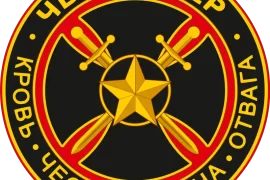The India Middle East Europe Economic Corridor (IMEC) has emerged as a significant geoeconomic and geostrategic project with the potential to challenge China’s Belt and Road Initiative (BRI). IMEC aims to enhance regional connectivity, stimulate economic growth, and create a seamless trade corridor from India to Europe. With powerful nations like India, the UAE, Saudi Arabia, the European Union, France, Italy, Germany, and the United States as members, IMEC stands as a formidable contender to the BRI. This article provides insights into the potential of IMEC to counter BRI.
Understanding IMEC: Objectives and Goals
The Memorandum of Understanding (MoU) concerning IMEC underscores its intent to promote economic growth by improving connectivity and economic integration among Asia, the Arabian Gulf, and Europe.
A direct and effective link between Asia, particularly India, and Europe,will result in a potential 40% reduction in travel time and a 30% reduction in transportation costs for goods.
Additionally, as outlined in the MoU, this corridor will fortify regional supply chains, enhance trade accessibility, streamline trade procedures, and promote a heightened focus on environmental, social, and governance impacts.
The signatories of the MoU include the governments of Saudi Arabia, the European Union, India, the United Arab Emirates (UAE), France, Germany, Italy, and the United States of America.
The Structure of IMEC: A Multi-Pronged Approach
IMEC comprises two primary corridors, each with a distinct purpose:
Eastern Corridor: This corridor connects India to the Gulf region, facilitating trade and connectivity between India and nations in the Arabian Gulf.

Northern Corridor: The northern corridor links the Gulf region to Europe, creating a seamless trade route from the Arabian Gulf to European markets.
Components of IMEC: Building the Connectivity
IMEC’s success relies on several key components:
Railway Line: The corridor includes a comprehensive railway network to transport goods efficiently between nations along the route.
Ship Rail Transit Network: To complement the railway system, IMEC incorporates a ship rail transit network for transporting goods via sea routes when necessary.
Road Transport Routes: An essential part of IMEC is the development of modern road transport routes to facilitate the movement of goods by land.
Hydrogen Pipeline: IMEC explores the use of hydrogen pipelines as an innovative means of transporting energy and supporting sustainable practices.
Optical Fiber Cables: High-density optical fiber cables are crucial for ensuring seamless communication and data exchange along the corridor.
A game changer
So far, Saudi Arabia, UAE, Jordan, and Israel, along with the three largest European economies, France, Germany, and Italy (although Italy is reconsidering its commitment to the BRI), have joined the IMEC project. This alliance has been prompted by the U.S., adding a significant geopolitical dimension.
The primary aim is to connect India, one of the world’s fastest-growing major democracies and economies, to Europe. The U.S. is also seeking to regain influence in the Middle East.Furthermore, there are long-term plans to facilitate the movement of goods from Southeast Asia, another high-growth region, through India into Europe. In essence, this initiative can be a game-changer.
Challenges Ahead: Can IMEC counter BRI?
While IMEC shows immense promise, it faces several challenges:
Operationalization: IMEC must expedite project construction to remain competitive. Delays could hinder its progress, especially as the BRI advances.
Political Considerations: IMEC should remain insulated from political changes in member nations, ensuring continuity in its development.
Chinese Influence: IMEC will need to navigate China’s diplomatic efforts to prevent member nations from switching allegiance back to the BRI.
IMEC vs. BRI: A Comparative Analysis
In terms of objectives, both IMEC and the BRI share similarities in promoting regional connectivity and economic growth. However, there are significant differences:
Scale: The BRI is much larger in scale, with over 150 member countries, 30 international organizations, and thousands of projects.
Timeline: The BRI has been operational since 2013, giving it a decade-long head start over IMEC.
Participants in the IMEC plan to convene within the next two months to formulate an action plan with specific timelines.
Financing: The BRI has been funded with over $1 trillion, dwarfing IMEC’s estimated cost of $20 billion.
Members: Several IMEC member countries, including Italy, Saudi Arabia and the UAE, are concurrently involved in the BRI. Italy, while still technically part of the BRI, has expressed a strong desire to withdraw from China’s Belt and Road Initiative (BRI). Italian Prime Minister Meloni conveyed Italy’s decision to exit the BRI during a meeting with Chinese Premier Li Qiang on the sidelines of the G20 Summit 2023.
Autonomy: IMEC aims to maintain member nations’ autonomy, whereas the BRI often imposes China’s will on participating countries.
IMEC’s Potential to Counter BRI
World Bank President Ajay Banga views IMEC as a strategic reaction to geopolitical tensions linked to Russia and China. Its objective is to establish a fresh trade route that integrates eco-friendly and digital components. It will ultimately boost connectivity and trade speed by 40%.
As it progresses, IMEC has the potential to challenge BRI’s dominance in international connectivity initiatives. To achieve this, IMEC must stimulate economic growth, expedite project implementation, and insulate itself from political changes. Most importantly, IMEC has to offer a legitimate alternative to the BRI.







